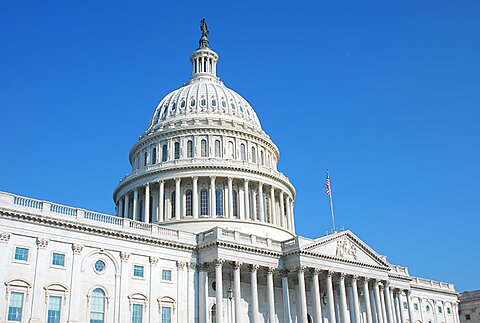
Researchers at the Atlantic Council say the United States is falling behind on central bank digital currency, or CBDC, development. But is it really? According to the Human Rights Foundation’s CBDC Tracker, the Federal Reserve has been conducting research and pilot programs for years. However, even if those developments do not meet the Atlantic Council’s standards, there’s no need to enter a race to the bottom by creating a CBDC.
A Thumb on the Scale?
The Atlantic Council’s report opens by immediately informing readers that the European Central Bank, the Bank of England, the Bank of Japan, the Reserve Bank of India, and the People’s Bank of China “have all made significant strides forward in their development of central bank digital currencies (CBDC[s]) and fast payment systems.”
Curiously, however, it’s not until the end of the piece that the researchers acknowledge that the Federal Reserve Bank of New York has been working on Project Cedar—a project to test wholesale CBDC designs. Even then, though, it’s not just the Federal Reserve Bank of New York and it’s not just Project Cedar.
According to the Human Rights Foundation’s CBDC Tracker, the Federal Reserve Bank of New York also announced work on a CBDC proof‐of‐concept project. Furthermore, the Federal Reserve Bank of Boston announced Project Hamilton to build and test a “hypothetical central bank digital currency for wide‐scale, general purpose use.” To coordinate efforts, the Biden administration called for “the creation of a Treasury‐led interagency working group to support the Federal Reserve’s efforts.” And finally, the Federal Reserve has been publishing CBDC research.
So, the United States has been quite active on the CBDC front.
Proponent’s Miscalculation
With that said, CBDCs that have been launched to the public already offer a cautionary tale. The Chinese government has given out millions of dollars in CBDC lotteries in an attempt to spur adoption. For example, in Shenzhen, $1.5 million in CBDC was given to 50,000 people. In Suzhou, $3.1 million in CBDC was given to 100,000 people. Yet the effort was less than successful. A former People’s Bank of China research director said, “The results are not ideal … usage has been low, highly inactive.”
The Chinese government handing out millions of dollars to try to get people to use the CBDC highlights what’s probably the biggest miscalculation among CBDC proponents: the failure to identify a sound justification for the creation of a CBDC in the first place.
When Meta proposed creating a cryptocurrency in 2019, government officials quickly latched on to the idea of launching a CBDC to combat the market and protect the government’s monopoly on money issuance. Yet, as that story faded and interest waned, organizations pushing CBDCs tried to re‐position the idea as a solution for financial inclusion, faster payments, monetary policy, and currency adoption. While these areas have all been due for improvement, Norbert Michel and I have explained at length that none of these benefits are likely to come from the creation of a CBDC.
Therefore, it seems proponents have now turned to the argument that the United States should create a CBDC so that it can influence other countries to do it the “right way.” In urging the Federal Reserve to do more, the Atlantic Council writes,
What’s concerning about this approach from the Fed is that central bankers around the world are asking for the Fed’s help. Central bankers often privately ask some version of: “Where is the Fed on this?” On a range of issues from privacy to cybersecurity, the Fed’s leadership would be welcome and its guidance and technological expertise listened to, even if the United States doesn’t determine there’s a need for a specific kind of payments innovation in its own domestic system.
First, the Federal Reserve does not exist to act as a consultant for foreign governments. A US CBDC should not be created on these grounds. Second, if it is concerning for central bankers that the Federal Reserve has not launched a CBDC, perhaps they too should reconsider launching one.
Conclusion
The Atlantic Council is right to say that the dollar should be improved, but the creation of a CBDC would not be an improvement for American citizens. In fact, based on the Human Rights Foundation’s CBDC Tracker, it doesn’t seem that a CBDC has been an improvement for much of anyone around the world.
If Congress wants to make positive changes for the dollar, it should look to strengthening financial privacy, promoting currency competition, and creating a freer financial system.



